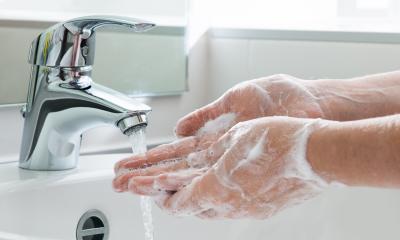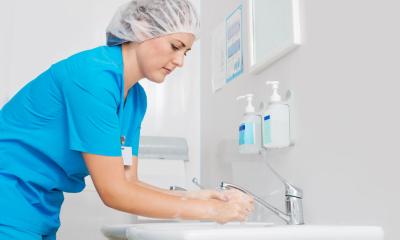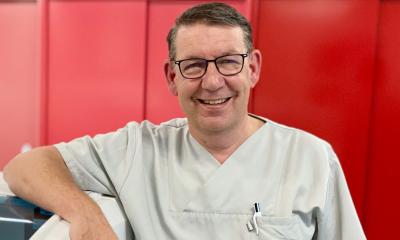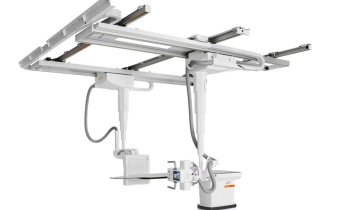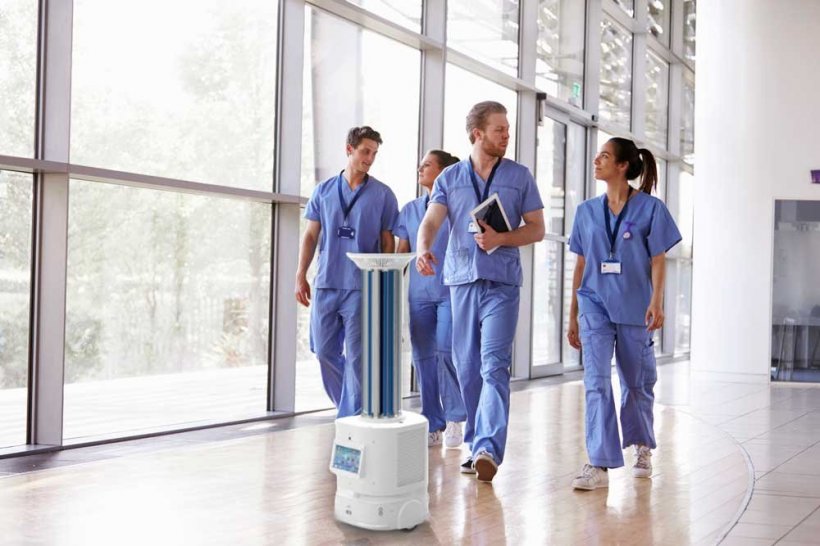
Source: UVCLight.co.uk
Article • Disinfection
Robots help fight hospital infections
In the hustle and bustle of a hospital, properly disinfecting all surfaces in a patient room can be a challenging and time-consuming task. Now, in times of the coronavirus pandemic, it can also be life-threatening. To minimize the risk for their staff, hospitals are utilizing disinfection robots to sanitize surfaces and rooms. Read on and learn more about how some of those robots are used to fight infections and kill 99.99 percent of germs.
Report: Sascha Keutel
UVCLight.co.uk
THE HELIOS UV disinfection and sterilization robot kills germs in the environment by decomposing their DNA structures, thus preventing and reducing the spread of viruses, bacteria and other harmful microorganisms. It is able to move autonomously for timed, fixed-point and multi-track mobile disinfection and sterilization in large areas.
The robot has two working modes:
Mode 1: Air circulating sterilization and disinfection. The sterilization and disinfection is equipped with high-power UV lamps. Air flows into the UV sterilization channel through the purification and circulation system. The robot is capable of killing microorganisms in the air, such as fungi, bacteria, and viruses, and has significant effects on harmful microorganisms in aerosols and the like.
Mode 2: UV sterilization and disinfection. The robot is turned on in an unmanned state through infrared induction, and the sterilization and disinfection center will emit the condensed UV beams to kill bacteria and other harmful microorganisms, thus preventing cross infection in high-risk areas and purifying the air.
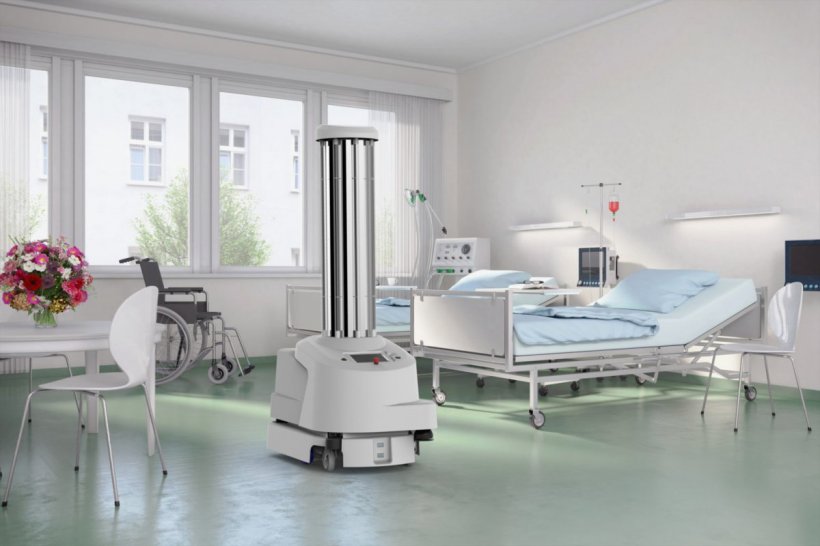
Source: UVD Robot
UVD Robots
UVD Robots, a subsidiary of Blue Ocean Robotics, can disinfect patient rooms and operating theaters in hospitals. The robots consist of a mobile base equipped with multiple lidar sensors and an array of powerful short wavelength ultraviolet-C (UVC) lights.
The operator deploys the robot using a computer. The robot scans the environment with lidars and creates a digital map. The operator can then annotate the map indicating all the rooms and points the robot should not disinfect. After that, the robot relies on simultaneous localization and mapping (SLAM) to navigate.
The autonomous robots can enter a room and disinfect it with UV-C light without exposing staffers to potentially harmful radiation. It takes between 10 and 15 minutes to disinfect a typical hospital room, with the robot spending one or two minutes in five or six different positions around the room to maximize the number of surfaces that it disinfects. The robot’s UV array emits 20 joules per square meter per second of 254-nanometer light at 1 meter distance, which will destroy 99.99 percent of germs.
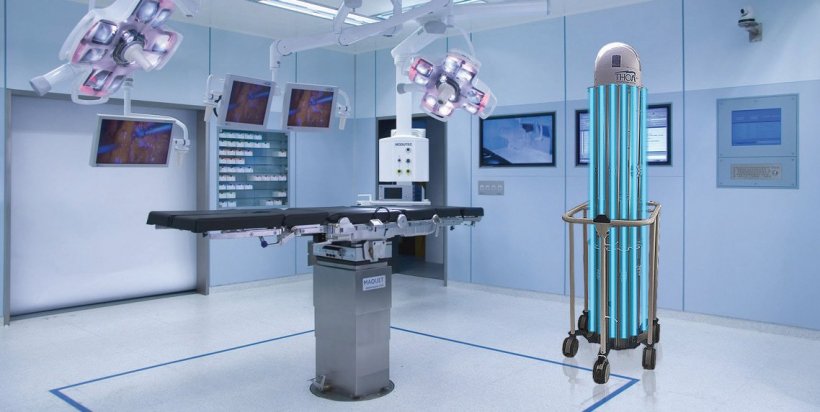
Source: Finsen Technologies
Finsen Technologies
The THOR UVC is a high-output UV disinfection robot using unique room mapping technology allowing the operator to position the robot in the optimum location to deliver a fast and effective germicidal dose of continuous wave UVC energy killing germs and pathogens. It works on the principles of the Inverse Square Law – and delivers more UVC power output over a longer distance, killing more germs in the quickest time – getting that area thoroughly disinfected.
The robot can be adjusted for any height between 1.1 m and 2.25 m, covering floor to ceiling and eliminating shadows, for more thorough disinfection. Its ergonomic handrail and unique 6 caster wheel design make it easy to move from room to room for fast and efficient room turnaround.
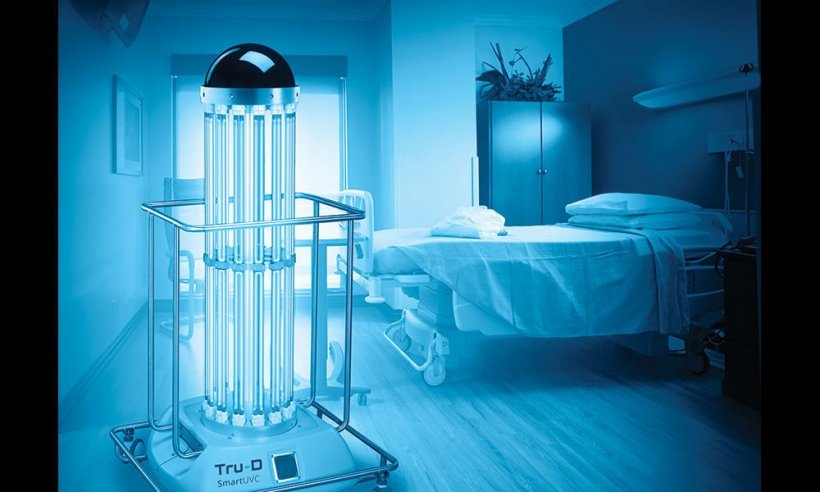
Source: Tru-D SmartUVC
Tru-D SmartUVC
The TRU-D SmartUVC is an automated, remote-controlled mobile disinfection UVC system that is capable to kill up to 99.9 percent of harmful pathogens. It also provides real-time reporting as well as analytical support for healthcare professionals.
Its Sensor360 allows the system to automatically calculate the pathogen-lethal UV dose required for each room and dynamically compensate for size, shape, and other dose-changing variables such as the position of contents, windows, blinds and doors.
During the disinfection cycle, Tru-D’s microprocessors and instrument-grade sensors measure the necessary amount of UVC energy that is reflected to the robot to destroy pathogens throughout an entire room from one position.
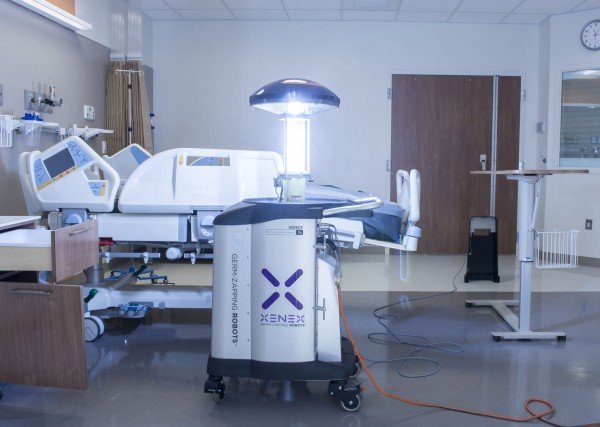
Source: Xenex Disinfection Services
Xenex Disinfection Services
Xenex Disinfection Services LLC uses UV technology for infection prevention strategies and solutions. With full germicidal spectrum light, Xenex’ LightStrike robots quickly deactivate viruses, bacteria and spores where they are most vulnerable without damaging hospital materials or equipment. Unlike most single spectrum low-intensity UV (UVGI) devices, the robot uses a xenon lamp to generate bursts of high intensity, full germicidal spectrum (200-315 nanometers) UVC light that is more intense than sunlight.
Use of the robot has been proven to kill pathogens on surfaces in the environment that are known to cause healthcare-associated infections (HAIs) in various peer-reviewed journals. In a recent test performed at the Texas Biomedical Research Institute, the robot destroyed SARS-CoV-2 in two minutes achieving a four-log (99.99 percent) reduction in that time.
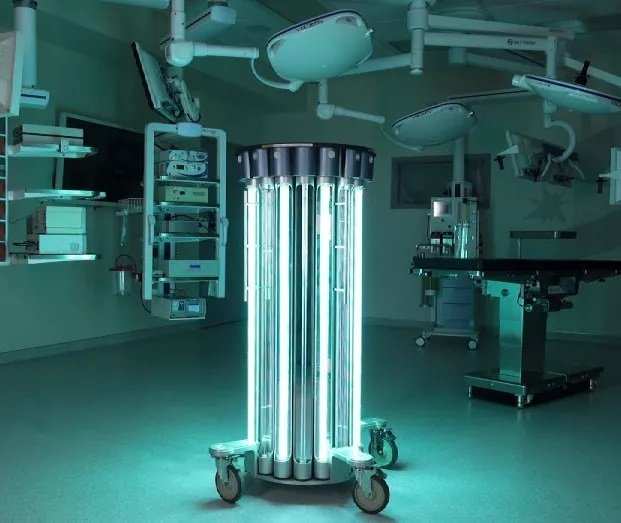
Source: Skytron
Skytron
With four robotic models to choose from, Skytron’s UVC solutions offer any hospital or long-term facility to choose the product for their specific need. All robots emit high-intensity ultraviolet light to sanitize patient exam rooms, restrooms, offices and personal protective equipment.
The devices are proven to kill bacteria, fungi and viruses, including 99.99 percent of coronaviruses, using UVC energy, which is a wavelength range of UV energy spanning 200 to 280 nanometers. The devices specifically use the highly germicidal 253.7 nanometers bandwidth to cause photochemical damage to cellular DNA and virus RNA, eliminating its infection capability.

Source: Sherpa Mobile Robotics
Sherpa Mobile Robotics
Sherpa Mobile Robotics (SMR), a company in NORCAN's innovation division, has partnered with Devea to develop a mobile, autonomous robotic disinfection system. The Devea system, known as Phileas, sprays the disinfectant with its centrifugation technology in perfectly calibrated micro-droplets with a size of 5 to 10 µm.
The robot is equipped with a spray device that generates a dry spray mist that reaches all types of surfaces - even inner surfaces of drawers. Since it is a dry virucide, it leaves no residue and poses no risk of corrosion or damage to surfaces and devices.
The device for airborne surface disinfection complies with the standard NFT 27-281. The virucide based on hydrogen peroxide has received market approval, which guarantees the effectiveness of the system for 99.99 percent of viruses.
16.06.2020



